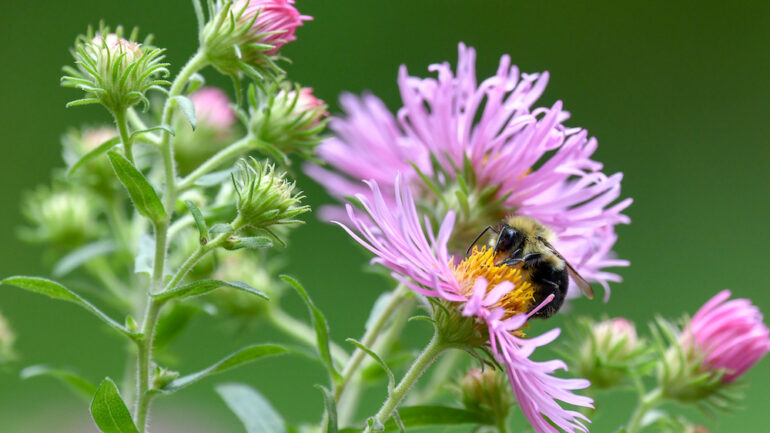Want to beautify your garden and save time and money on maintenance while giving Mother Nature a hand? Add native plants to your yard, a relatively simple task that pays off big. Here’s a primer on gardening with native plants.
What are native plants?
Native plants are those naturally found in your area, as opposed to the exotic (i.e., non-native) plants generally found in American landscapes. Native plants have evolved over hundreds of thousands of years to be well-adapted to local soil and growing conditions. This makes them easier to grow and care for.
Native plants, which can be just as beautiful as non-natives, are part of the local ecosystem. They further biodiversity and support local wildlife such as birds, bees, butterflies, mammals, reptiles, insects and amphibians. By contrast, exotic plants eliminate wildlife habitats by removing animal food sources such as nectar, pollen, seeds and the insects that feed on native plants.
Native plants need minimal maintenance. Though you’ll still have to weed and mulch them, they require no fertilizer and fewer pesticides than exotic plants. Native plants also need little extra water and, with their deep root systems, help reduce erosion. Once established, they help keep out invasive plants.
Adding native plants to your landscape
“Going native” can involve everything from growing a native in a container or adding a few native plants to a perennial border to converting a portion of your property to a meadow or creating an entire landscape of native plants.
Before you plant, determine what is native to your area. You can observe what grows in natural areas of your community. But to know precisely which plants are native to your area, research online. Check with websites such as the Lady Bird Johnson Wildflower Center, which lists native plants by state, or the Audubon Society or National Wildlife Federation, which identifies natives by zip code.
Wildlife will return fairly quickly once you plant natives. Even a few of these plants will make a difference.
If you want to create an all-native landscape, consider the following.
- Begin with a goal in mind. Do you want to attract certain wildlife? Are you interested in cutting back on maintenance? Is privacy from neighbors your aim? You may have multiple goals.
- As with any landscape, use a blend of native trees, shrubs, vines, grasses, perennials and annuals. Make sure you choose the appropriate sizes. Consider what the landscape will look like in all seasons. Mix sizes, shapes, textures and colors. Use hardscaping to define your space.
- Don’t remove native plants that are already there.
- Be patient. It may take some time for native plants to look their best.
Related – Starting New Plants from Cuttings


